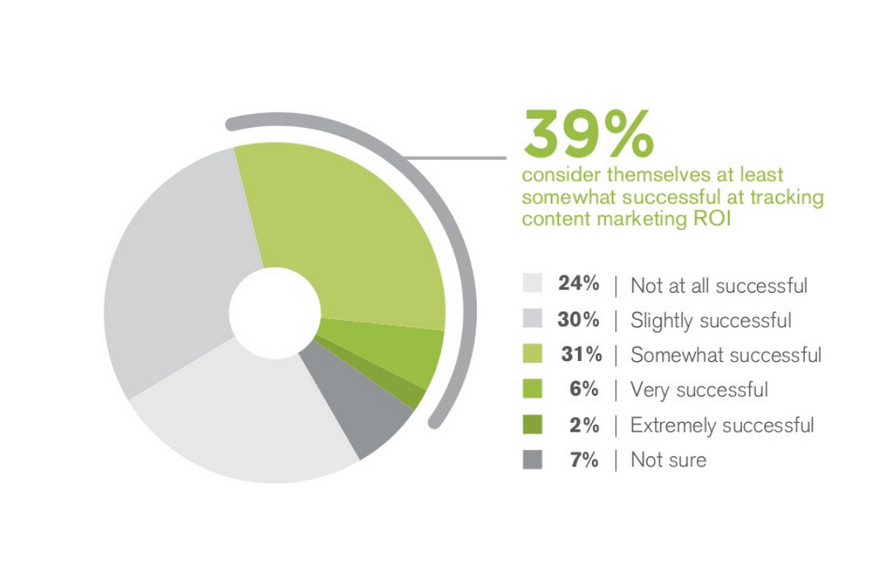It is content marketing metrics that define the impact your strategy is making on business growth. If your strategy’s main goal is to encourage sales and drive revenue growth, the focus may be on lead nurturing or customer retention. If your designated objective is brand awareness and your metrics show your content strategy has created a vibrant brand following, but sales metrics have modestly inched forward, you can still demonstrate that your content marketing is working. Customer retention KPIs will give you an idea of how successful your content is at keeping your current audience engaged and motivated. Page depth, blog and social comments and session duration are good engagement metrics. Lead metrics include the number of new leads generated and the number who interact with a specific piece of content. When your number one content marketing goal is to drive sales, these are the numbers that will be the most important. How you set up your marketing technology stack will depend on the needs of your organization, what types of content you are using and, of course, which marketing metrics are most aligned with organizational goals. With a marketing automation platform like Marketo and Hubspot, you can keep track of your contents’ lead metrics and set up dynamic processes for measuring your campaigns. Which will make your content more useful to your organization.

Getting your content marketing analysis right isn’t just about finding out how successful your strategy is and validating it to stakeholders. It’s the only way you’ll be able to make your content marketing strategy better and use it for achieving business goals.
Without the right metrics, you are making decisions in the dark, possibly without even realizing it. Only by knowing clearly where your content marketing is furthering your organization’s business goals, and where it is falling short or is misaligned, will you ever be able to turn your content into the powerhouse that drives business growth. Something you know it is capable of.
Your metrics are what will tell the story of your content, illustrating where it works, how well, and why or why not. It is content marketing metrics that define the impact your strategy is making on business growth.
Only by using the right metrics, however, can you distinguish between the potential of your content and what it is currently doing to move your organization closer to its goals.
Which means, there is a big problem if you are using the wrong metrics, whether you’re putting too much value on vanity metrics or are simply off on your key performance indicators. If this is the case, your content marketing reporting could be misleading your strategy, taking it in the wrong direction, spreading it too thin, or preventing it from reaching its potential as a tool for growth because you’re missing opportunities.
How Do Most Content Marketers Measure Up?
If you’re having trouble measuring the worth of your content marketing, you’re not alone. Only 39 percent of marketers believe they are at least somewhat successful at tracking ROI. Just 8 percent say they are very successful.

And, 65 percent of B2B marketers are struggling to define what content is effective and what isn’t.
This leaves a lot of room for improvement. It also indicates that gaining a huge competitive edge may lie in your ability to track and measure your content. The bottom line is, most content marketers aren’t getting their marketing metrics right, despite all the marketing technology available today.
Less than half of B2B marketers – about 46 percent – are satisfied that their marketing metrics are aligned with their content marketing goals. More often than not, marketers are simply not tracking the right metrics.

How can you make your analytics align with your goals and support a goal-focused content marketing strategy?
First, it goes back to establishing your KPIs – and really digging deep to determine which ones matter, right now, for your organization. A lot of marketers just use general marketing metrics but fail to interpret the most essential for your business.
“It makes no difference whatsoever what MY most important content marketing metric is – the real question is: what metric, what key performance indicator is most important to your business? No two marketers’ objectives are exactly alike. What matters is aligning against business goals, not all the abstract things you can measure.”
–Rebecca Lieb, strategic advisor and former digital advertising and media analyst for Altimeter Group
And second, it’s about using the right marketing analytics solutions and making your platforms work for you. This means you’ll need to develop a marketing technology stack that allows you to clearly track the entire buyer journey, starting from the first touch point to closing a sale.
Targeting Your Content Marketing Metrics for Business Goals
What are the top goals of your content marketing strategy?
- Is the focus on attracting new customers to help fuel future business growth, so your priorities may be lead generation and customer acquisition?
- Is the objective to build trust in your brand and establish your organization as an industry thought leader? In this case, your content marketing metrics may revolve around social media engagement, market education and website traffic.
- If your strategy’s main goal is to encourage sales and drive revenue growth, the focus may be on lead nurturing or customer retention.
Most marketing teams have multiple objectives but identifying which matter the most – right now – is critical to creating a results-driven content marketing strategy.
Of course, every business wants to generate leads, build brand awareness and increase revenue. However, there has to be a focused priority to form the backbone of your content marketing. This is what you base your KPIs on.
With a clear idea of your current content marketing goals, you’ll know which metrics matter the most right now. For example, consumption and lead metrics will take a front row seat on your analytics platforms when your primary goal is to attract new customers.
You’ll still use KPIs from different categories as you’ll need to understand how effective your content is at each stage of the buyer journey, but it is the priority metrics that show you if you are reaching your main goals.
This distinction is also important for communicating with management or other stakeholders the impact of your content. If your designated objective is brand awareness and your metrics show your content strategy has created a vibrant brand following, but sales metrics have modestly inched forward, you can still demonstrate that your content marketing is working. It achieved its goals.
And, of course, with that vibrant brand advocate army your content strategy helped to form, watch out sales numbers, you’re next! It’s easier to reassure stakeholders when the primary objectives are laid out and the related metrics take center stage. Then, you can move onto your next content marketing priorities with the confidence of C-suite.
Choosing Your Content KPIs
Content marketing metrics can be broken down into several categories:
- Consumption
- Retention
- Sharing
- Engagement
- Leads
- Sales
Consumption Marketing Metrics
Consumption metrics have to do with the number of people consuming your content, as well as the frequency and depth of their consumption and what channels they are using to reach your content. These metrics are going to take a front row seat in your content marketing reporting if…

COMMENTS